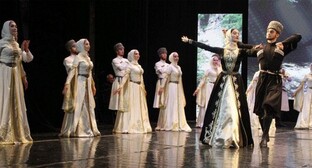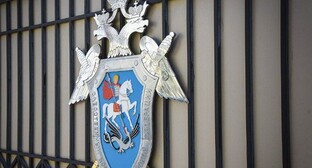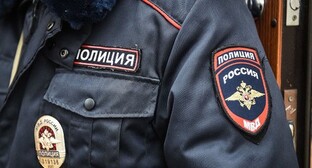03 June 2003, 04:09
Kists
Kistins, kisti, kiti - the ethnic group of Nakhs living in the Pankiss canyon of the Akhmet district of the Republic of Georgia. The earliest mentioning of the ethnic name - in "Armenian Geography" by Anani Shirakatsi (VII century) (kusts, kistk) and in the Georgian chronicle of the XIII century (kishts). In the Russian sources of the XVIII-XIX centuries the name was borrowed from Georgian history books and the term kists was used as a general name of Vainakhs and as a narrow ethnic term meaning Ingushes - the inhabitants of the canyon along the rivers Kistinka and Armkhi and Chechens - inhabitants or the upper reaches to the river Chanti-Argun.
Nowadays Kists live in the villages Jokolo, Dzibakhevi, Duisi, Omalo, Shua-Khalatsani, Zemo-Khalatsani, Birkiani, Khorajo, Chkhatana. Chechens and Ingushes call them gurjiyekhar nokhchi/vainakh - "Georgian Chechens/Vainakhs". Kist dialect of the Chechen language is a number of village sub-dialects: Jokoi, Duis, Omaloi. Part of them are Christians, part are Sunnits of Shafi kind (mazkhaba).
According to the literature and archive materials, Chechens and Ingushes moved to Pankisi in the XVII-XIX centuries. Among them there were both Moslems and traditional pagan believers. The central part of the traditional system was the cult of the Great God - Vokkha Dela (Dyala, Diela, Dieli, Deel; after the adoption of Islam this name is understood as one of the Divine names). In 1860 in Tiflis Russian authorities have founded "A society on restoration of Orthodox Christianity in the Caucasus". In 1866 the society tried to recruit the priests among the kists, started to build religious schools to spread literacy and churches (in particular, in the village Jokolo; in the end of the XIX century there lived 187 Christians and 18 Moslems). As in many other mountainous districts, the Christianisation of the population was sometimes forced. At the same time there acted Moslem preachers from Chechnya, Ingushetia, Dagestan, Azerbaijan. Thus a mullah coming from Karajala (now - the Telav district of Georgian Republic) started to teach children Arab in the village Duisi (one of the most populated Kist villages). In 1860-ies the doctrine of the Kadirit shaikh Kunta-haji was supported by Kists as well, some turned to mysticism due to its influence. In 1898 they started to build a mosque (mejig) in Duisi (546 people in the end of the XIX century: 47 Christians and 499 Moslems; total population of Kists in 1901 was 1352 people). He was protected by the Mullah Bakan-ogli from Belokani village (now - Belokan district of Azerbaijan Republic) and by the mufti of the Caucasus. In 1902 (or in 1905) a mosque was built, it was erected by the pshav I. Kistishvili from the village Kvarel-Tskali.
Kists remember the brothers Khangoshvili - the preachers of Islam - Gebish, Akhig and Nongi from Duisi village. The story says that the elder, Gebisha, made a Hadj and after returning he started religious activities. The brothers invited from Chechnya first a scientist-preacher Vaat, then after his death - mullah Kurmakham. The latter lived in Pankisi for about ten years and then returned to his motherland. Then they invited the Lezghin mullah Kurban; he married a Kist woman and stayed in Duisi village. Since 1905 there served the Chechen mullah Tavsolta. In 1909 from Azerbaijan there came the nakshbandi shaikh Is-efendi (Isa-shaikh), that gathered the pupils and headed the brotherhood. He died in Duisi village in 1920. The followers gathered in the room of their teacher: men in the evening from Thursday to Friday, women - on Friday noon.
After the Soviet power came to Georgia (1921) the mosque in Duisi village was closed. Machig Machalikashvili from Duisi village played an important role in the restoration and support of the influence of kadiria brotherhood. Having returned from Ingushetia, he founded a new society in 1927. In 1928 the Chechen shaikh Adu formed a separate branch (vird): during the services they started to use the drum, they wore beards and white hats. After the shaikh moved to Chechnya, the vird headed by his follower - the local mullah Kerim Duishvili. Murids gathered every Sunday in the room where shaikh Adu stayed. In 1969 the mosque was restored on the money of the believers, in it they performed the sufi rituals again (after the usual service; women's services took place in the open air). Religious hymns (nazm) are sung both in Arab and in Kist languages.
An obligatory attribute of the heads (tkhyamd) of the nakhshbandi and Kadirit virds and their deputies (turakkh) is the rosary consisting most often of 99 beads (some are made of 999 beads - sulkhanash, salkhanash). The hundredth bead that the count of the prayers starts with, is called mullah and has a more elongated shape than the rest of the beads. Each 33rd bead is marked by two mutalim beads of a different color (from the Arab words muta?allim - "pupil"). Nakshbandia and kadiria followers have different order of counting prayers. The first count the rosary once a day and pray to all the authorities they worship beginning with Prophet Mohammed. The second count 200 prayers: the first hundred is dedicated to the Prophet, Teacher (ustaz) Kunta-khaji and all the "saints" and shaikhs from Mohammed to Kunta-khaji, the second hundred - to the Prophet, ustaz, the father and mother of the praying person.
Moslem rituals are closely connected to the ancient traditions of Kistins. This shows in everyday life, for example in the traditions of greeting. Coming to the house, the guest is greeting first: if men are meeting him, he greets them in Arab, if it's women - in Kistin. Men respond in Arab and in Kistin. Women are not addressed in Arab.
Among the Moslem holidays Kists celebrate the breaking of the lent (maarkh dastar) and the holiday of the sacrifice (gurba de). Kists have a custom to dedicate the sacrifice to one of the family members. Usually four families together buy a cow or a bull, and the person it?s dedicated to has to pat the animal on its back. The sacrificial meat is divided in seven parts, one for the orphans. During the month of fasting they only have dinner at 7 o'clock ("when the stars appear on the sky") and breakfast at 4-5 in the morning.
Besides the active mosque, kists perform prayers by the ancient cult constructions. One of them is located 200 meters from Baltagor - Tsu ("god", "holy" in Chechen and Ingush) or Tsiind Giurg/Tsminda Giorgi (Georgian, Saint George). In the village Chabano of the Tianet district there is a meeting-house Yerdi Ganishaani /Yerdi Ganishaanebis. It was built by the sons of the Chechen Daad that moved here from the Maistin society in the second half of the XVIII century, - Tacho, Omani, Ganisha. The original construction in the form of a niche was restored by the granddaughter of Ganish. They also worship the ancient niche Chvibier Tsu in the canyon Chobio, near the village Jokolo. Many kists go to pray to the sanctuaries Sameba Tsu, Kopala, Tushuol/Tusholi, as well as to the cenrtal sanctuary of Tushetia - Lasharis Jvai in the village Chigo. Kists and the mountaineers of Georgia (Tushins, Pshavs, Khevsurs) have common places of worship, rituals and holidays. This is explained by the most close connections of the mountain peoples during their cultural and historical development. Old beliefs and traditions are very stable.
Until 1960-ies in the Pankiss canyon there were two sufi virds - Is-efendi (nakshbandia) and Adu-shaikha (kadiria). ?Holy? tombs of the shaikhs are located: Is - in the village Kabala of the Lagodekh district of Georgian Republic, adu - in the village Dishni-Vedeno of the Vedenski district of the Chechen Republic of Ichkeria. Nowadays several societies are active, including the female ones. The reading of Koran has an special place in the ritual practice of the Kists.




